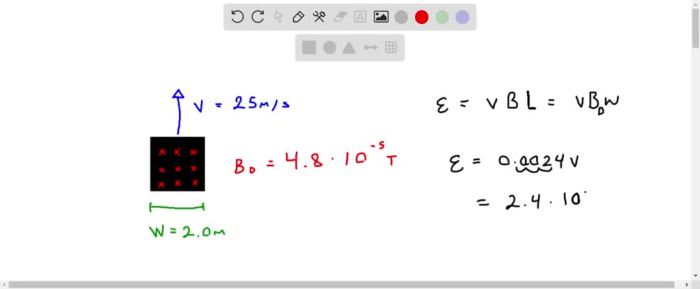Near san francisco where the vertically downward component – Near San Francisco, the vertically downward component of the landscape has played a pivotal role in shaping the city’s geography, infrastructure, and urban development. From its iconic hills to its complex fault lines, this unique topography has left an indelible mark on the Bay Area, influencing everything from engineering challenges to cultural identity.
This comprehensive analysis delves into the geological formations responsible for San Francisco’s downward vertical slopes, examining the challenges and opportunities they have presented throughout history. It explores innovative architectural designs, urban planning strategies, and environmental implications, providing a multifaceted understanding of this captivating urban landscape.
Vertical Downward Components of San Francisco’s Geography: Near San Francisco Where The Vertically Downward Component

San Francisco’s unique topography is characterized by its vertical downward components, which significantly influence its geological formations, urban development, and cultural identity.
Geological Formations
The Bay Area’s topography is shaped by the San Andreas Fault, which runs along the peninsula and creates a downward slope towards the Pacific Ocean. This fault line has resulted in the formation of hills, valleys, and other geological features that contribute to the city’s distinctive landscape.
The downward slope of San Francisco’s terrain is also influenced by the presence of sedimentary rocks, which have been uplifted and eroded over time. These rocks form the foundation of the city’s hills, such as Twin Peaks and Nob Hill, and provide a natural drainage system.
Impact on Urban Development
The vertical downward components of San Francisco’s geography have had a profound impact on its urban development. The city’s hills and valleys have presented challenges for construction and infrastructure, but have also created unique opportunities for architectural design and urban planning.
For example, the steep slopes of Nob Hill required the construction of the California Street Cable Car, which has become an iconic landmark. The city’s hills have also inspired the development of terraced housing and other innovative architectural solutions to overcome the challenges of the terrain.
Engineering and Architectural Adaptations
The engineering challenges posed by San Francisco’s vertical downward slopes have led to the development of innovative architectural and engineering solutions.
One of the most notable examples is the Golden Gate Bridge, which spans the San Francisco Bay and is supported by two massive towers that are anchored into the bedrock below. The bridge’s design had to take into account the strong winds and seismic activity in the area.
Another example is the Transamerica Pyramid, which is the tallest building in San Francisco. The building’s unique shape was designed to withstand the high winds and earthquakes that are common in the city.
Impact on Urban Planning and Development
San Francisco’s vertical downward components have significantly influenced its urban planning and development strategies.
The city’s hills and valleys have created natural boundaries that have shaped the growth of different neighborhoods. For example, the Financial District is located on the flatlands near the bay, while the residential neighborhoods of Pacific Heights and Nob Hill are situated on the hills.
The city’s topography has also influenced the development of public transportation. The cable cars and steep streets have made it necessary to develop alternative modes of transportation, such as the Muni Metro and the BART system.
Environmental Implications, Near san francisco where the vertically downward component
The vertical downward components of San Francisco’s geography have environmental implications that affect drainage, erosion, and vegetation.
The steep slopes of the city’s hills can lead to erosion, especially during heavy rains. To mitigate this, the city has implemented a variety of measures, such as planting trees and installing retaining walls.
The city’s topography also affects drainage. The steep slopes can cause water to flow quickly downhill, leading to flooding in some areas. To address this, the city has constructed a complex system of storm drains and culverts.
Cultural and Social Influences
The vertical downward components of San Francisco’s geography have shaped the city’s cultural and social identity.
The city’s hills and valleys have created a sense of community and neighborhood identity. The different neighborhoods have their own unique character and charm, and residents often take pride in their local area.
The city’s topography has also influenced the way that people live in San Francisco. The steep hills have made it necessary to develop a strong sense of community and cooperation. Residents often rely on each other for support and assistance, especially during times of emergency.
Questions and Answers
What are the geological formations responsible for San Francisco’s vertical downward slopes?
The downward vertical slopes are primarily due to the presence of the San Andreas Fault, which runs through the Bay Area. Over time, seismic activity along the fault has created a series of hills and valleys, shaping the city’s topography.
How have San Francisco’s vertical downward slopes influenced its urban planning?
The city’s topography has posed challenges for urban development, requiring innovative solutions such as terraced housing and earthquake-resistant construction techniques. However, it has also created unique opportunities, such as the iconic views from the city’s hills.
What are some of the unique architectural designs that have been implemented to overcome the challenges posed by San Francisco’s vertical downward slopes?
Examples include the Transamerica Pyramid, which is designed to withstand earthquakes, and the Lombard Street, known for its steep and winding curves.

